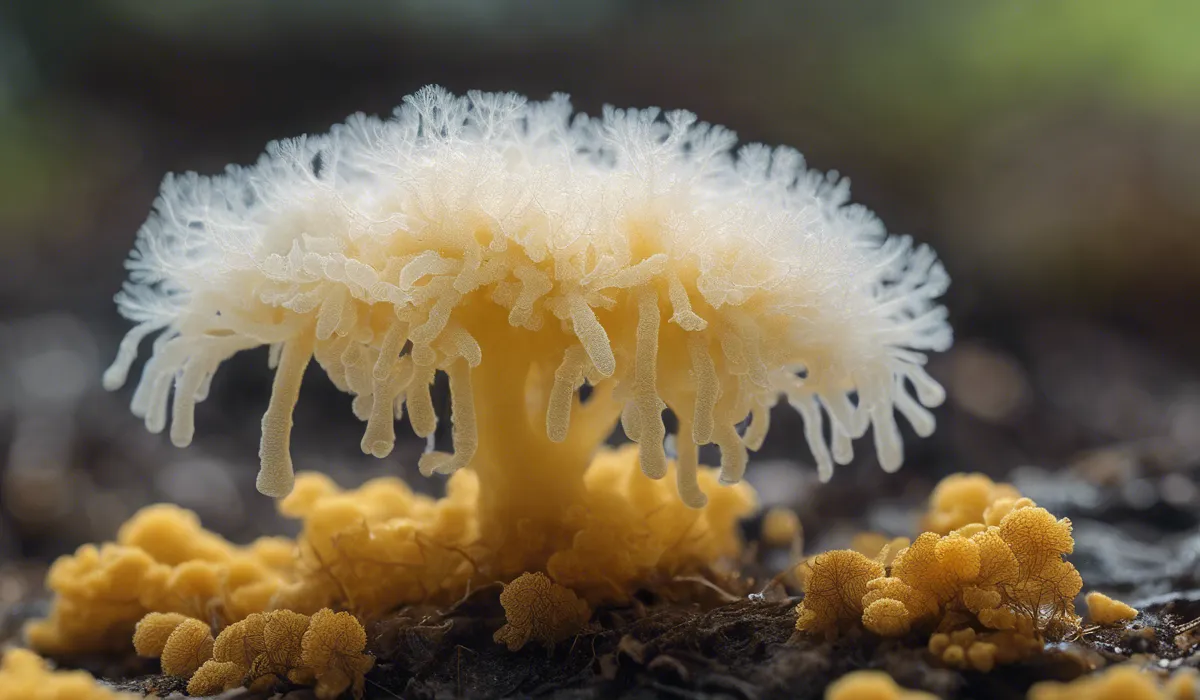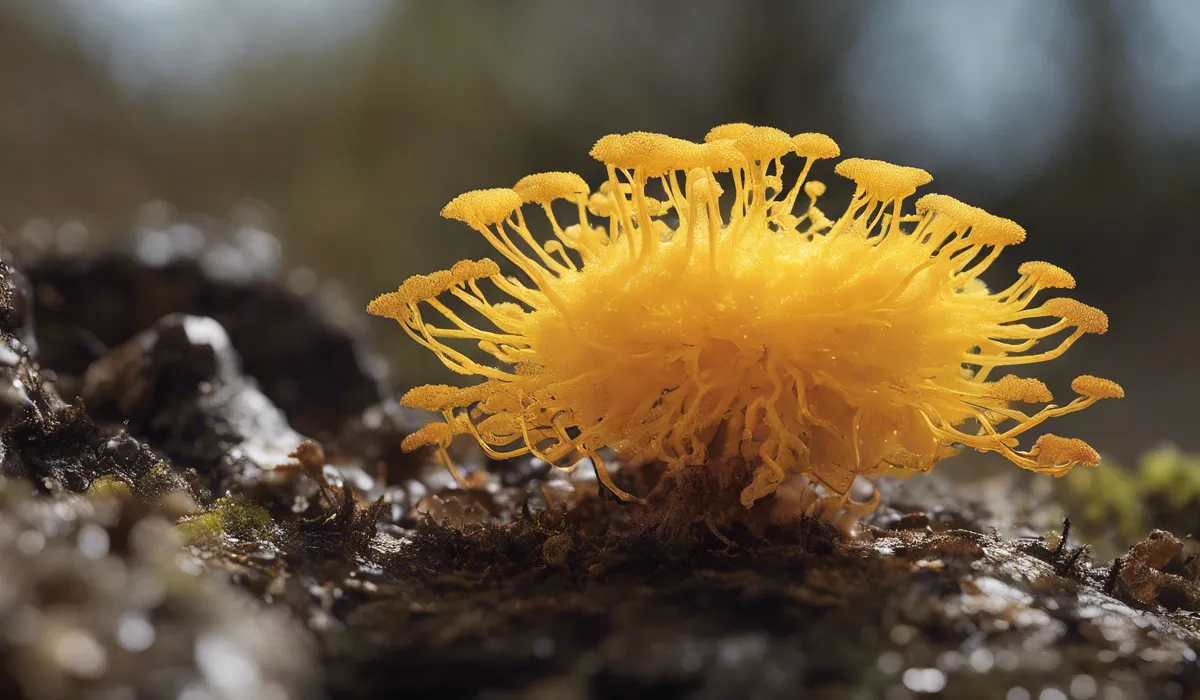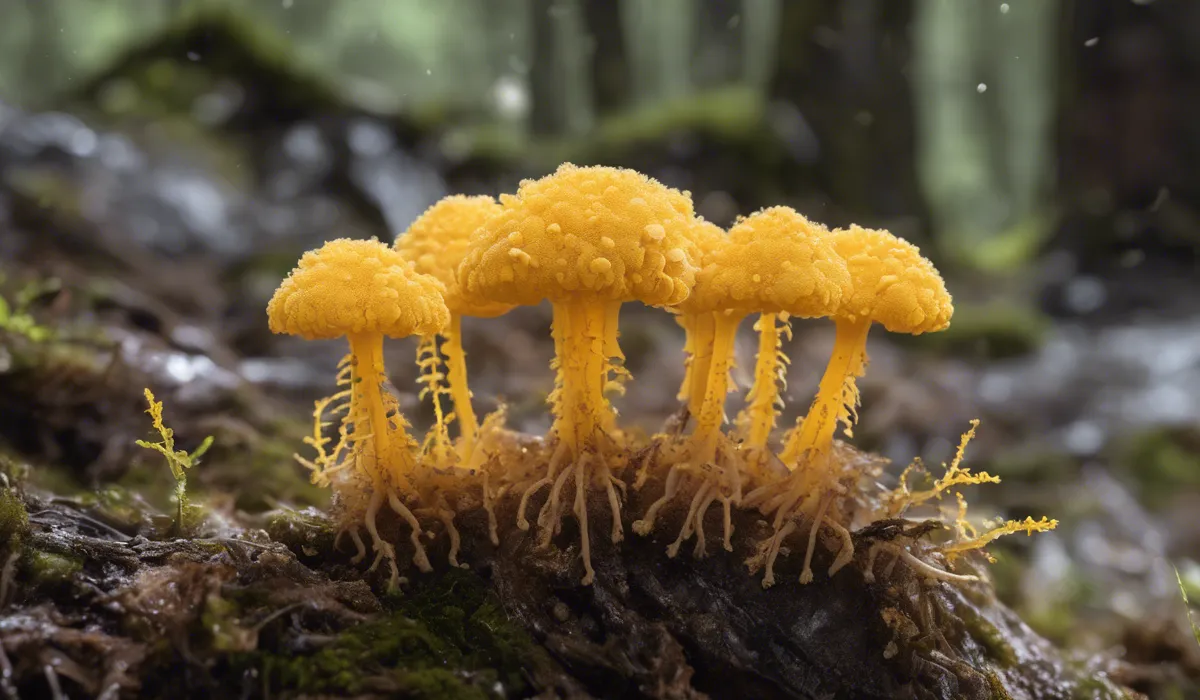Slime mold is not dangerous to humans or animals. It’s a unique organism that plays a role in ecosystems by decomposing organic material. While it may look unappealing, slime mold poses no harm to health and doesn’t require control measures.
Understanding Slime Mold

What is Slime Mold?
Slime mold is a fascinating organism that often mystifies people with its unique characteristics.
It is not a plant, an animal, or a type of fungus. Instead, slime molds are a special group of living organisms called protists.
They typically thrive in moist, shady environments, like the forest floor, and they come in vibrant colors such as yellow, pink, and purple.
Although they may look like a scene from a science fiction movie, slime molds are quite real and play an essential role in nature.
The Life Cycle of Slime Mold
Slime molds have a unique life cycle that sets them apart from other organisms. They start their life as single cells, which then merge to form a large mass known as a plasmodium.
This blob-like stage allows them to move and consume organic material. Unlike plants and fungi, slime molds do not have a stationary phase and can actually crawl at a noticeable pace.
After feasting and growing, they eventually produce fruiting bodies that release spores, starting the cycle anew.
Distinguishing Plasmodial from Cellular Slime Molds
There are two primary types of slime molds: plasmodial and cellular. Plasmodial slime molds are essentially one large cell with multiple nuclei, formed by the fusion of individual cells.
They are known for their ability to flow over surfaces as they search for food. On the other hand, cellular slime molds exist as individual cells that act independently until they join together to form a multicellular organism when food is scarce.
Both types showcase the incredible adaptability and diversity of slime molds.
Slime Mold Versus Fungi and Plants
Slime molds differ from fungi and plants in several ways. Unlike fungi, slime molds do not form filaments, nor do they have a chitin-based cell wall.
They also do not photosynthesize like plants, relying instead on the organic matter they decompose to sustain themselves. These differences underline the unique place slime molds occupy in the tree of life.
Slime Mold and the Environment

The Role of Slime Mold in Nature
Slime molds play a pivotal role in their natural habitats. They are decomposers, which means they break down dead plant material and recycle nutrients back into the soil.
This process is vital for the health of ecosystems as it helps maintain the balance of nutrients and ensures that plants have access to the elements they need to grow.
Decomposition and Nutrient Cycling
By decomposing organic matter, slime molds contribute to nutrient cycling, an essential ecological process.
They help convert complex organic compounds into simpler forms that plants can absorb and use. This not only contributes to soil fertility but also helps regulate the carbon cycle, impacting the broader environment.
Coexisting with Other Organisms
Slime molds interact with a variety of other organisms, including bacteria, insects, and plants.
Sometimes, they form symbiotic relationships where both parties benefit. For example, certain insects may help spread slime mold spores, while the slime mold provides a nutrient-rich environment for the insects to thrive.
Environmental Benefits of Slime Mold
The benefits of slime molds extend beyond their immediate surroundings. By breaking down dead organic material, they help reduce the buildup of litter and contribute to the overall health of the forest.
Their role in cycling nutrients is also critical for the growth and reproduction of many plant species, helping to sustain diverse ecosystems.
Human Interactions and Safety Concerns

Addressing Misconceptions About Danger
Despite their sometimes off-putting appearance, slime molds are not harmful to humans or animals.
Many people mistake them for toxic fungi or worry about their potential dangers, but these fears are unfounded. Slime molds are harmless, and there is no need for concern when encountering them in nature or around the home.
Slime Mold in Residential Areas
In the home and garden, slime molds may appear on mulch, lawns, or in potted plants. While they may be considered an aesthetic nuisance by some, they do not pose a threat to the health of the garden or the gardener.
There is no need for chemical control measures, and they can simply be left to fulfill their ecological role.
Potential Allergies and Irritations
While slime molds are generally safe, some individuals may experience allergies or irritations when they come into direct contact with them.
It is always wise to handle slime molds, as with any unknown organism, with care. If you have sensitive skin or a known allergy, it is best to avoid touching them or to use gloves when handling them.
Safe Practices for Handling Slime Mold
If you need to remove slime mold from your property, you can do so safely by scooping it up with a shovel or wearing gloves.
Disposing of it away from your garden should be sufficient to manage its presence. Since slime molds are a part of the ecosystem, it is best to approach them with respect and handle them in a way that does not harm the environment.
FAQs About Slime Mold Safety
Is slime mold harmful to humans?
No, slime mold is not harmful to humans; it is a harmless organism involved in decomposing organic matter.
Can slime mold cause health issues for pets?
No, slime mold is not dangerous to animals and does not cause health issues for pets.
Should I remove slime mold when I see it?
Slime mold does not require removal as it is not harmful and plays a beneficial role in ecosystems.
Does slime mold contribute to the environment?
Yes, slime mold contributes to the environment by helping decompose dead organic material.
Is it necessary to use pesticides on slime mold?
No, since slime mold is not harmful, the use of pesticides or other control measures is unnecessary.
Final Thoughts
Slime mold is a harmless organism to both humans and animals. Its presence is a natural part of ecosystem processes, aiding in the decomposition of organic matter.
Despite its sometimes off-putting appearance, it is benign and does not necessitate any intervention for health or environmental reasons.
